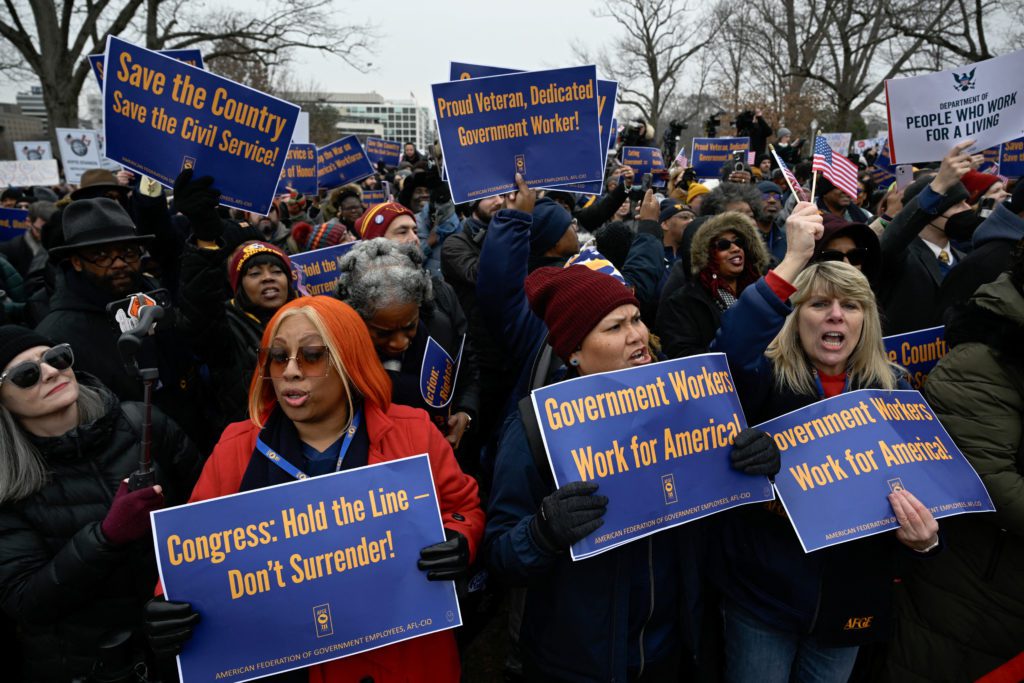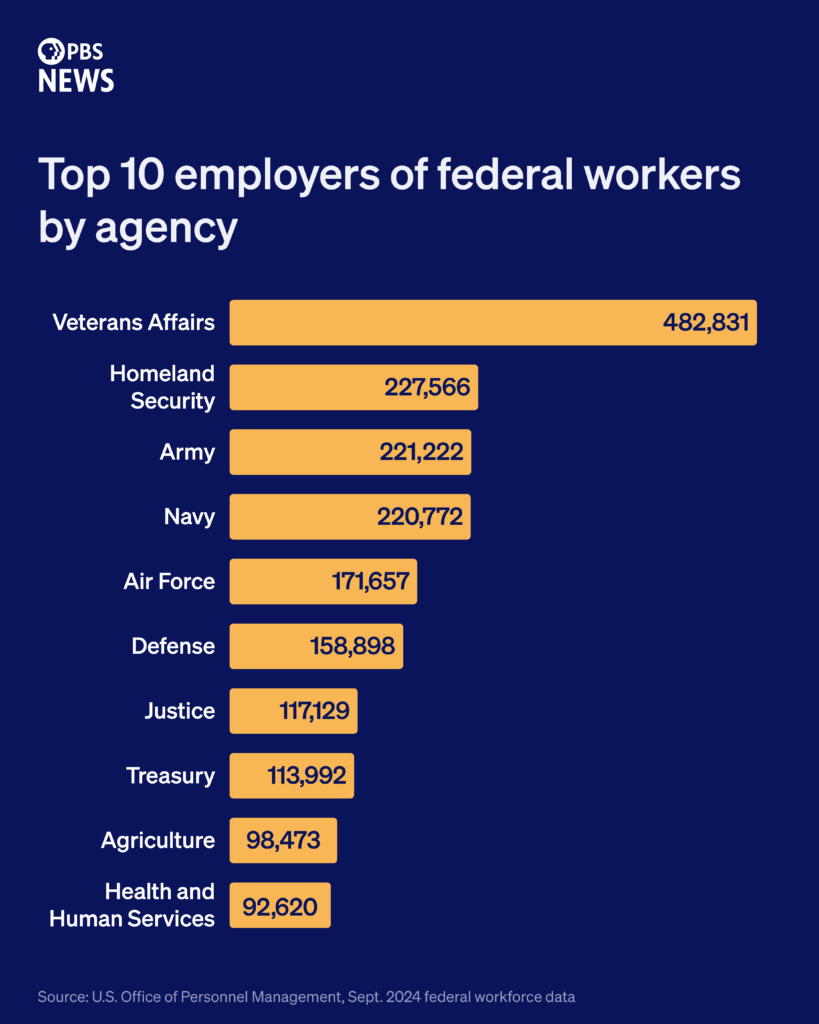
In his initial months back in office, President Donald Trump has prioritized significant cuts to the federal workforce. This move aligns with the declining public trust in government. Trump has accused long-serving federal employees of being responsible for the nation’s issues, labeling them as “crooked,” “dishonest,” and “unnecessary,” a characterization that many experts consider misrepresentative.
Rob Shriver, who served as the former acting director of the Office of Personnel Management under President Joe Biden, asserts that federal employees genuinely strive to enhance governmental operations in alignment with the administration’s objectives. He emphasizes that their commitment is to serve the American public effectively.
So, who are these federal employees? Available data illustrates a diverse range of individuals making up the U.S. civil service. A typical federal worker could be a Customs and Border Protection official in Sanderson, Texas, a nurse at a Veterans Affairs clinic in Pittsburgh, or a programmer at a court in Savannah, Georgia.
Recently, the Office of Management and Budget instructed agencies to enact large-scale workforce reductions, which may involve layoffs and renegotiating collective bargaining agreements with federal workers’ unions. The goal is to enhance “government efficiency and employee accountability,” with each four employees let go potentially replaced by just one new hire.
The full impact of Trump’s recent executive orders and the subsequent downsizing of government agencies—along with the many legal challenges emerging against these measures—on federal employment figures has yet to be determined.

Graphic by Jenna Cohen/PBS News
Trump has described the federal workforce as “bloated,” despite the fact that its size has remained relatively stable since the late 1960s, with employment rates generally ranging between 1.8 and 2.4 million. Aside from the decennial hiring surge during the census, the federal workforce has not seen substantial fluctuations. The Bureau of Labor Statistics has indicated that total federal employment reached 2.4 million in January.
Here are five key insights about federal employees, informed by the most recent data from September 2024 as reported by the U.S. Office of Personnel Management.
The majority of federal employees reside outside the Capitol region
Federal employees span all 50 states and even work internationally. While roughly 454,000 federal employees are based in the D.C., Maryland, and Virginia area, over 80% of the workforce is located elsewhere in the United States or abroad as of 2024.
WATCH: How Trump’s mass firings are impacting the National Park Service—an ex-ranger’s perspective.
Among the remaining 1.8 million employees in the U.S., states like California, Texas, and Florida host around 151,000, 131,000, and 95,000 federal workers, respectively. In contrast, states like North Dakota and Wyoming have about 5,700 and 6,800 federal employees, respectively.

Graphic by Jenna Cohen/PBS News
As Shriver noted, there are USDA offices present in every county, offering vital support to farmers in need of financial guidance, especially in states like Iowa.
Additionally, around 19,000 federal workers inhabit U.S. territories, including American Samoa, the Northern Mariana Islands, and Guam, while approximately 31,000 work in various foreign nations, with 4,200 based in unnamed locations worldwide. Remarkably, about 276,000 employees, such as those in the FBI and Secret Service, serve in undisclosed locations within the U.S.
The Department of Veterans Affairs is the largest federal employer
Nearly 20% of federal employees—roughly 483,000 individuals—find employment within the Department of Veterans Affairs (VA), more than twice the amount employed at the Department of Homeland Security, the next largest employer. A significant portion of VA personnel, nearly two-thirds, are women.
Historically, the VA also ranks as the primary employer across several states, while other leading agencies vary by location, including the Department of Agriculture in Montana and Idaho and the Department of the Navy in states like Virginia and Rhode Island.
About 46% of VA employees occupy roles as nurses, medical support staff, or medical officers.

Graphic by Jenna Cohen/PBS News
Across all federal agencies, nursing ranks as the profession with the highest number of employees, approximately 111,000, followed closely by IT management at around 101,000. Out of 2.3 million federal workers, roughly 2.1 million are categorized as “white collar,” with the remainder engaged in “blue collar” or unspecified positions, including custodians, mechanics, and electricians.
Some lesser-known federal positions include about 900 individuals working in laundry and pressing services, approximately 1,200 meat cutters, 900 naval architects, and 150 funeral directors.
The federal government employed over 642,000 veterans last year
Veterans account for about 25% of the federal workforce, a notable contrast to the broader civilian labor market, where veterans represent only 5% of workers. The majority of these veterans work within the VA, the Defense Department, or branches of the military, though around 20% are employed in various other agencies, including Transportation, Agriculture, and Health and Human Services.
WATCH: Implications of Trump’s second term for military personnel and veterans.
Some veterans hold positions in institutions like the U.S. Holocaust Memorial Museum and the Federal Maritime Commission.

Graphic by Jenna Cohen/PBS News
The preference for hiring veterans likely plays a role in their prominence within the federal workforce. Max Stier, president and CEO of the Partnership for Public Service, explains that while hiring preferences are influential, veterans often possess a strong inclination to serve their country.
“There’s a significant alignment between military service and civilian roles within government,” he noted. “Both involve serving the public, albeit in different capacities.”
One in five federal workers identifies as having a disability
Approximately 531,000 federal employees self-report having a disability. In stark contrast, only about 5% of the national workforce identifies as having a disability, according to data from February 2024.

Graphic by Jenna Cohen/PBS News
The average salary for federal employees reporting disabilities was approximately $95,000, significantly higher than the average salary of about $61,000 for full-time workers with disabilities in 2022, as reported by the Center for Research on Disability.
Notably, 45% of employees with disabilities are veterans.
Over half of federal employees earn less than $100,000 annually
The average salary among federal workers was around $106,000 in 2024, with only 17% earning more than $150,000. Many employees earn considerably less than average, including the average blue-collar workers at around $70,000, in contrast to $110,000 for white-collar counterparts. At the VA, nearly 40% of personnel earn between $50,000 and $80,000 annually.
Moreover, men earn approximately $7,000 more than women on average. White federal workers typically earn about $111,000, while Black and Hispanic/Latino workers earn less than $97,000 on average.

Graphic by Jenna Cohen/PBS News
Federal employees generally exhibit greater job longevity compared to private sector workers, with an average tenure just under 12 years as of September 2024. Comparatively, the median duration for American workers at a single job is just below four years.
WATCH: Federal employees prepare for possible replacement by loyalists under Trump.
Factors like civil service protections and competitive salaries may contribute to this extended tenure, as noted by Roger Nober, director of the Regulatory Studies Center at The George Washington University. Additionally, many government workers are motivated by a strong sense of purpose in serving the public good, as highlighted by Stier.
“The vast majority are driven by a desire to serve the public. They are compelled to contribute positively and improve society through government,” he expressed.









